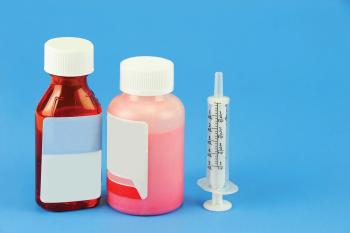
- Pharmaceutical Technology-02-02-2010
- Volume 34
- Issue 2
Q&A with Jim Vaughan of 3M Drug Delivery Systems
3M Drug Delivery Systems Division Vice President Jim Vaughan discusses facility locations and the drug-product inhalation market.
Jim Vaughan
PharmTech:Do you see a new industrytrend emerging?
Vaughan:New developments in theAsia–Pacific region havebeen interesting to follow. In2009, for the first time, mostof the world’s biosciencedegrees were awarded topeople outside the UnitedStates, and we are certainly seeing the changes that isbringing about. The explosion of startups, particularly inAsia, is one of the key factors in our expansion of laboratoryfacilities. Our new laboratory in Singapore supports earlystageproduct development and late-stage regulatory datademands, so we are able to serve new and establishedpharmaceutical companies in that region. We expect thislaboratory to become a major research hub, in addition toour research locations in the US and United Kingdom.An additional trend is the expansion of microneedletechnology, in which we are seeing increased interest.At 3M, we have long experience with this technologyand we feel well positioned, with our solid and hollow,microstructured transdermal systems, to meet the newdemands for these applications.
PharmTech:What is the most common demand your clients arecurrently making of you?
Vaughan:Our clients are looking for innovation in drug deliveryand new ways to administer their products. Our chieftechnologies are in the areas of inhalation and transdermaldelivery, so we are often called upon to adapt drugproducts to these methods. The capabilities of bothtechnologies are expanding, and the inhalation market isgrowing to include larger molecules than before, includingproteins and peptides. Inhalation is a promising deliveryroute for local and systemic drug delivery. The numberof transdermal therapies is growing steadily as well. Wehave created a method of solid microneedle delivery thatexpands the range of medications that can be deliveredtransdermally to patients, including vaccines, proteins, andpeptides. We also are working on a hollow, microstructuredtransdermal system that will further expand the range ofmedications for which transdermal systems can be used.
Articles in this issue
almost 16 years ago
Do Visible Residue Limits Make the 10-ppm Carryover Limit Obsolete?almost 16 years ago
A Bio View of Outsourcingalmost 16 years ago
The Talk of the Labalmost 16 years ago
Advances in Custom Synthesisalmost 16 years ago
Is the Internet to Blame for Unsafe Drug Use?almost 16 years ago
In the Spotlight February 2010almost 16 years ago
Specialty Pharmaceutical Focus: Pancreatic Enzyme Productsalmost 16 years ago
Breaking Down Barriers to Oral Deliveryalmost 16 years ago
Manufacturers Look to Vaccines for Growth and Innovationalmost 16 years ago
In the Field: Report from EuropeNewsletter
Get the essential updates shaping the future of pharma manufacturing and compliance—subscribe today to Pharmaceutical Technology and never miss a breakthrough.




